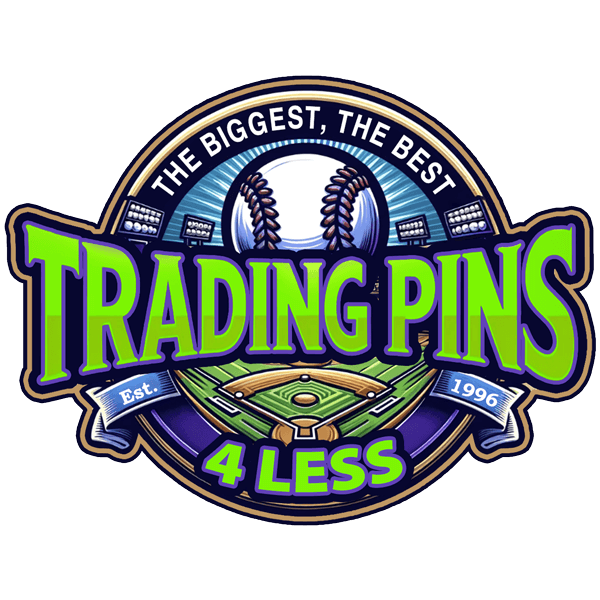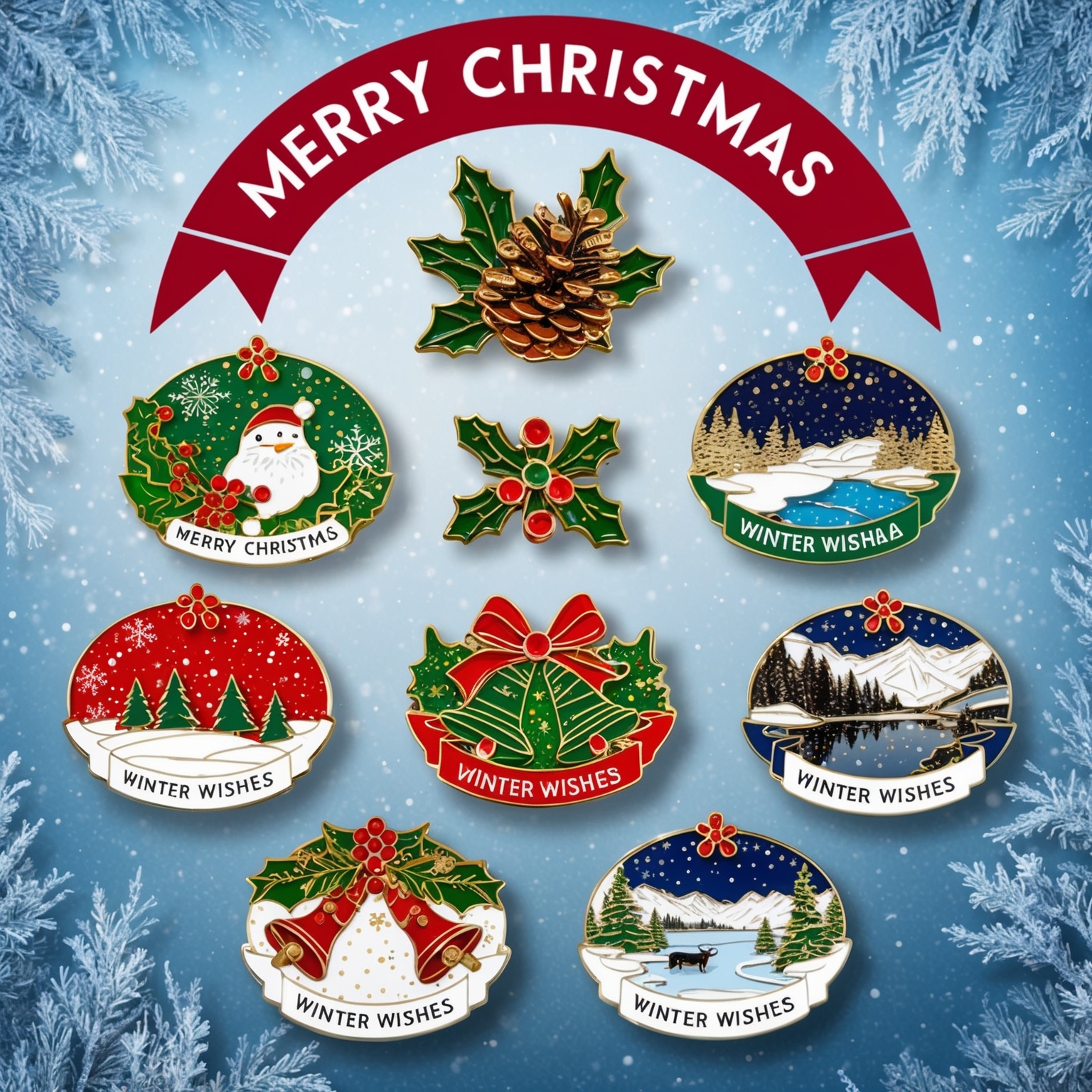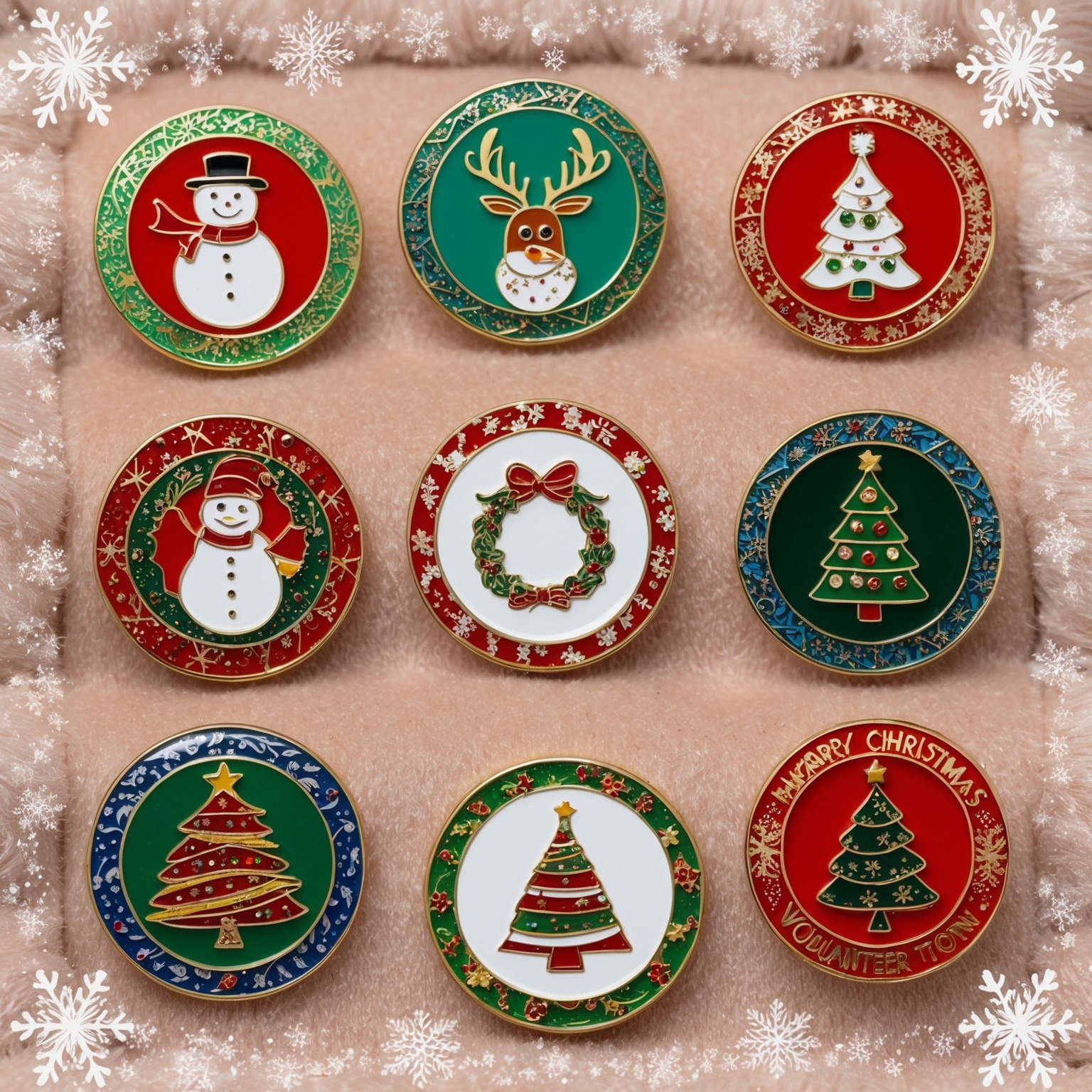Trading pin swap meets are vibrant events that bring together collectors and enthusiasts to buy, sell, and trade their favorite pins. These gatherings are more than just marketplaces; they are social events that foster community, allow for the exchange of stories, and celebrate the diversity of trading pins. Whether you’re organizing your first swap meet or looking to improve an existing one, careful planning, effective promotion, and smooth execution are key to a successful event. This guide provides a comprehensive overview of organizing a great trading pin swap meet, from initial planning to post-event activities, optimizing the experience for attendees and organizers alike.
Trading pin swap meets offer a unique opportunity for collectors to connect, trade, and expand their collections. These events are a staple in the pin trading community, providing a platform for enthusiasts to share their passion, discover new pins, and engage with like-minded individuals. A successful swap meet requires meticulous planning and execution, as well as effective promotion to attract a diverse group of attendees.
The appeal of trading pin swap meets lies in their communal atmosphere, where collectors of all ages and backgrounds come together. Whether the focus is on sports pins, Disney pins, pop culture, or custom designs, swap meets offer something for everyone. The excitement of finding rare pins, making trades, and meeting new people creates a dynamic and enjoyable experience.
In this guide, we will explore the essential elements of organizing a trading pin swap meet. We will cover the planning process, including selecting a venue, setting a date, and arranging logistics. We will also discuss strategies for promoting the event to ensure a good turnout. Finally, we will provide tips for executing the event smoothly, from setting up the venue to managing activities and ensuring a positive experience for all participants. By following these guidelines, you can create a memorable and successful trading pin swap meet that fosters a strong sense of community and enthusiasm for the hobby.
1. Planning Your Trading Pin Swap Meet
The foundation of a successful trading pin swap meet lies in thorough planning. This phase involves several key considerations, including selecting a suitable venue, setting a date, organizing logistics, and planning activities.
Selecting the Right Venue
Choosing the right venue is crucial for the success of your swap meet. The venue should be accessible, spacious, and equipped with the necessary facilities to accommodate the needs of attendees and vendors. Consider the following factors when selecting a venue:
- Location: The venue should be easily accessible by public transportation and have ample parking for attendees. A central location can attract a larger audience.
- Size: Ensure the venue has enough space to accommodate the expected number of participants, tables for trading, and any additional activities or displays. Consider both indoor and outdoor options, depending on the season and weather.
- Amenities: Look for venues with essential amenities such as restrooms, seating areas, and electrical outlets. Additional facilities like Wi-Fi, food and beverage services, and security may also be beneficial.
- Cost: Consider your budget when selecting a venue. Some venues may offer discounted rates for non-profit events or community gatherings. Ensure the cost aligns with your overall budget for the event.
Setting the Date and Time
Choosing the right date and time for your swap meet is important for maximizing attendance. Consider the following factors:
- Availability: Check for potential conflicts with other local events, holidays, or major pin trading events that could impact attendance.
- Seasonality: The time of year can influence attendance. For example, hosting a swap meet during school holidays or weekends may attract more families and younger collectors.
- Duration: Decide on the duration of the event. A typical swap meet may last a few hours to a full day, depending on the scope of activities and expected turnout.
Organizing Logistics
Effective logistics management is key to a smooth and successful event. Consider the following logistical aspects:
- Registration and Entry: Determine if the event will require pre-registration or if attendees can register on-site. Consider whether there will be an entry fee and how it will be collected.
- Tables and Layout: Plan the layout of the venue, including the arrangement of tables for trading, vendor booths, and any activity areas. Ensure there is enough space for attendees to move around comfortably.
- Equipment and Supplies: Arrange for necessary equipment, such as tables, chairs, display boards, and signage. If the event includes audio-visual presentations or announcements, ensure you have the necessary equipment.
- Staff and Volunteers: Recruit staff and volunteers to assist with various tasks, including setup, registration, information booths, and security. Assign specific roles and responsibilities to ensure smooth operations.
Planning Activities and Features
Enhancing the experience for attendees can make your swap meet more enjoyable and memorable. Consider incorporating the following activities and features:
- Trading and Sales: Set up designated areas for pin trading and sales. Encourage vendors and collectors to bring a variety of pins for display and trade.
- Workshops and Demonstrations: Offer workshops or demonstrations on pin trading, collecting, or crafting. These sessions can provide valuable information and engage attendees.
- Contests and Raffles: Organize contests, raffles, or giveaways to add excitement to the event. Prizes can include rare pins, collectibles, or merchandise.
- Guest Speakers or Special Guests: Invite guest speakers, such as well-known pin designers or collectors, to share their insights and experiences.
- Photo Opportunities: Create themed photo areas or backdrops where attendees can take pictures with their favorite pins or characters.
2. Promoting Your Trading Pin Swap Meet
Effective promotion is essential to attract a diverse and enthusiastic group of attendees to your swap meet. A well-executed marketing strategy can help spread the word about your event and generate excitement within the pin trading community.
Creating Promotional Materials
The first step in promoting your swap meet is creating eye-catching promotional materials. These materials should include essential information about the event and appeal to your target audience. Consider the following elements:
- Event Name and Logo: Create a memorable event name and logo that reflect the theme and spirit of the swap meet. A catchy name and visually appealing logo can help your event stand out.
- Flyers and Posters: Design flyers and posters that include the event’s date, time, location, and a brief description. Distribute these materials in local businesses, community centers, and other high-traffic areas.
- Digital Graphics: Create digital graphics for social media, email campaigns, and websites. These graphics should be consistent with your branding and include key event details.
Leveraging Social Media
Social media is a powerful tool for promoting events and engaging with potential attendees. Utilize various platforms to reach a wider audience and create buzz around your swap meet. Consider the following strategies:
- Event Pages and Invitations: Create event pages on platforms like Facebook and Eventbrite. Invite friends, followers, and relevant groups to RSVP and share the event with their networks.
- Social Media Posts: Regularly post updates, teasers, and behind-the-scenes content leading up to the event. Use engaging visuals, videos, and hashtags to increase visibility and engagement.
- Live Streams and Q&A Sessions: Host live streams or Q&A sessions with special guests, organizers, or pin experts. These sessions can provide valuable information and generate excitement.
- Contests and Giveaways: Run social media contests or giveaways to encourage participation and sharing. Offer prizes such as free entry, exclusive pins, or event merchandise.
Utilizing Email Marketing
Email marketing is an effective way to reach existing contacts and potential attendees. Use email campaigns to share important event information, updates, and reminders. Consider the following tips:
- Build a Mailing List: Collect email addresses from past events, website sign-ups, and social media followers. Segment your list to tailor your messages to different groups.
- Email Newsletters: Send out newsletters with event details, featured vendors, special guests, and activity highlights. Include clear calls to action, such as registering or sharing the event.
- Reminders and Updates: Send reminder emails as the event date approaches. Include any last-minute updates, schedule changes, or special announcements.
Partnering with Local Businesses and Organizations
Collaborating with local businesses and organizations can help expand your reach and attract a broader audience. Consider the following partnership opportunities:
- Sponsorships: Offer sponsorship opportunities to local businesses in exchange for promotional benefits. Sponsors can provide financial support, prizes, or in-kind contributions.
- Cross-Promotion: Partner with local businesses, community centers, or hobby shops to cross-promote the event. They can distribute flyers, display posters, or share event information on their social media channels.
- Media Coverage: Reach out to local newspapers, radio stations, and online media outlets to cover the event. A press release or media advisory can help generate interest and publicity.
Engaging the Pin Trading Community
Engaging with the pin trading community is crucial for promoting your swap meet and attracting dedicated collectors. Consider the following strategies:
- Forums and Online Communities: Post event information on pin trading forums, online communities, and message boards. Engage with members, answer questions, and encourage participation.
- Influencers and Enthusiasts: Reach out to well-known pin collectors, influencers, or bloggers to promote the event. They can share the event with their followers and provide valuable exposure.
- Collector Groups and Clubs: Connect with local collector groups and clubs. Invite them to participate in the event, set up tables, or host activities.
3. Executing a Successful Trading Pin Swap Meet
The execution phase is critical to the success of your trading pin swap meet. Ensuring a smooth and enjoyable experience for attendees requires careful attention to detail, effective communication, and efficient management.
Setting Up the Venue
The setup process involves arranging the venue to accommodate trading, sales, and activities. Consider the following aspects:
- Table and Booth Arrangement: Arrange tables and booths in a logical and accessible layout. Provide clear signage and labels for different areas, such as trading zones, vendor booths, and information desks.
- Registration and Entry: Set up a registration area where attendees can check in, receive event materials, and pay entry fees (if applicable). Ensure staff or volunteers are available to assist with registration and provide information.
- Activity Areas: Designate specific areas for activities such as workshops, contests, photo opportunities, and guest speakers. Ensure these areas are well-marked and accessible.
- Safety and Accessibility: Ensure the venue is safe and accessible for all attendees. Consider factors such as crowd control, emergency exits, and accommodations for attendees with disabilities.
Managing the Event
Effective event management involves overseeing various aspects of the swap meet, including logistics, activities, and attendee engagement. Consider the following strategies:
- Staff and Volunteer Coordination: Ensure staff and volunteers are well-trained and aware of their responsibilities. Assign specific tasks, such as managing registration, assisting vendors, and overseeing activities.
- Announcements and Communication: Use a PA system or designated areas for announcements. Keep attendees informed about event schedules, activities, and any changes. Provide clear directions and information about the venue layout.
- Trading and Sales Management: Monitor trading and sales activities to ensure a fair and respectful environment. Address any disputes or issues that arise and encourage positive interactions among attendees.
- Activity and Contest Coordination: Oversee the execution of planned activities, such as workshops, contests, and guest presentations. Ensure these activities run on schedule and are engaging for attendees.
Enhancing the Attendee Experience
Creating a positive and memorable experience for attendees is essential for the success of your swap meet. Consider the following tips:
- Welcoming Atmosphere: Create a welcoming and inclusive atmosphere. Greet attendees warmly, provide assistance, and encourage interaction among participants.
- Engaging Activities: Offer a variety of engaging activities and features to keep attendees entertained. Consider interactive elements, such as pin trading games, trivia contests, or DIY pin-making stations.
- Food and Refreshments: Provide food and refreshment options, either through on-site vendors or nearby facilities. Consider offering a designated area for dining and relaxation.
- Feedback and Interaction: Encourage attendees to provide feedback about the event. Use feedback forms, suggestion boxes, or online surveys to gather input and improve future events.
4. Post-Event Follow-Up and Evaluation
Post-event follow-up and evaluation are crucial for assessing the success of your swap meet and planning for future events. This phase involves gathering feedback, evaluating outcomes, and maintaining engagement with attendees.
Gathering Feedback
Collecting feedback from attendees, vendors, and staff is essential for understanding the strengths and weaknesses of your event. Consider the following methods:
- Surveys and Questionnaires: Distribute surveys or questionnaires to attendees, vendors, and staff. Ask for feedback on various aspects of the event, such as venue, organization, activities, and overall experience.
- Online Reviews and Social Media: Monitor online reviews and social media comments about the event. Encourage attendees to share their experiences and provide constructive feedback.
- Direct Communication: Reach out to key participants, such as sponsors, vendors, and special guests, for direct feedback. Discuss their experiences and gather suggestions for improvement.
Evaluating Outcomes
Evaluating the outcomes of your swap meet helps measure its success and identify areas for improvement. Consider the following aspects:
- Attendance and Participation: Review the number of attendees, vendors, and participants in activities. Compare these numbers to your goals and expectations.
- Financial Performance: Assess the financial performance of the event, including revenue from entry fees, sales, and sponsorships. Compare expenses and identify areas for cost optimization.
- Activity and Engagement: Evaluate the success of activities, workshops, and contests. Determine which elements were most popular and engaging for attendees.
- Challenges and Solutions: Identify any challenges or issues that arose during the event. Analyze how they were addressed and consider solutions for future events.
Maintaining Engagement
Maintaining engagement with attendees and the pin trading community after the event is important for building a loyal following and promoting future events. Consider the following strategies:
- Thank You Messages: Send thank you messages to attendees, vendors, sponsors, and volunteers. Express appreciation for their participation and support.
- Event Recap: Share an event recap on social media, websites, or newsletters. Include highlights, photos, and notable moments from the event.
- Future Event Announcements: Announce plans for future swap meets or related events. Encourage attendees to stay connected and participate in upcoming activities.
- Community Building: Foster a sense of community among attendees by creating online groups, forums, or social media pages. Encourage ongoing discussions, pin trading, and sharing of collections.
Conclusion
Organizing a successful trading pin swap meet requires careful planning, effective promotion, and efficient execution. From selecting the right venue and setting the date to managing activities and engaging with attendees, each step plays a crucial role in creating a memorable and enjoyable event. By focusing on the needs and interests of the pin trading community, organizers can foster a welcoming and inclusive atmosphere that encourages positive interactions and the exchange of pins.
A well-executed swap meet not only provides a platform for buying, selling, and trading pins but also serves as a celebration of the hobby and the diverse interests it represents. Whether attendees are seasoned collectors or newcomers, the experience of participating in a swap meet offers opportunities for discovery, connection, and community building.
As the popularity of trading pin swap meets continues to grow, organizers have the opportunity to innovate and enhance the experience for participants. By gathering feedback, evaluating outcomes, and maintaining engagement with the community, organizers can continue to improve and expand their events, ensuring that each swap meet is better than the last.
For collectors and enthusiasts, trading pin swap meets are more than just events; they are a chance to explore their passion, share their collections, and make lasting connections with others who share their interests. With the right planning and execution, a trading pin swap meet can be a highlight of the pin trading calendar and a cherished experience for all involved.
If you are interested in buying high quality custom trading pins, you can call us at 1-800-641-1299 or fill out a FREE quote form.







